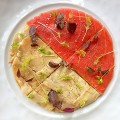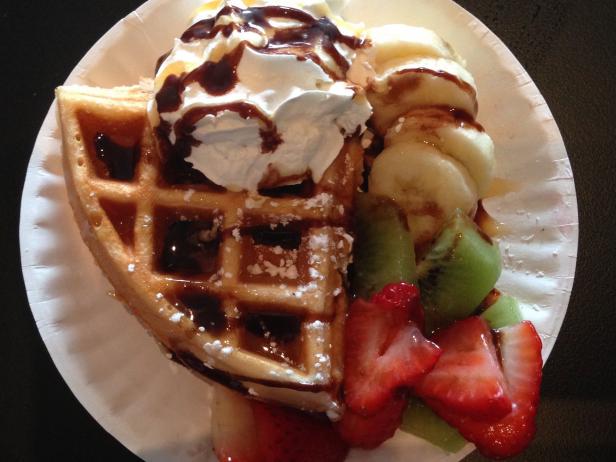
Well! As you can see that nowadays Chinese and Japanese cuisine has been a part of America’s culinary scene for decades. However, some best yummy traditional Korean food in recently years has become increasingly popular with the rise in Korean-American communities across the U.S. According to recent statistics, New York, Maryland, Virginia, California, New Jersey and Georgia are among those with the most Korean-American residents. In fact, one of the largest Korean-American communities is situated just outside Atlanta in Gwinnett, which has earned the nickname “Seoul of the South.”
The organization Explore Gwinnett recently invited me to take their “Seoul of the South” tour and I was able to sample a wide range of Korean dishes and snacks from such popular local restaurants and cafes as The Stone Grill, Honey Pig, Suwanee Chicken and Pizza and Arte 3. Here are some of the best and most flavorful dishes which can be found in most traditional Korean restaurants.
1.Korean Dumplings
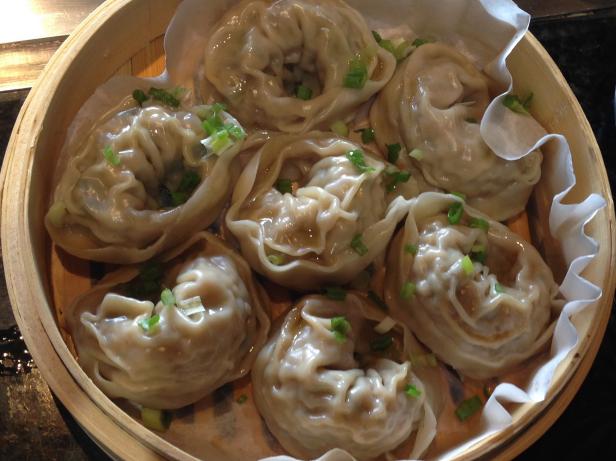
Dumplings are a common appetizer or side dish in most Asian restaurants but the Korean version is called jjin mandu and is usually filled with a meat mixture (pork and beef though some versions feature shrimp), onions, cabbage, carrots, mung bean noodles or other complementary ingredients. They can be steamed, boiled or fried and are usually served with a variety of sweet, spicy and savory sauces for dipping. The result is super soft, juicy pillows of flavor.
2. Cheese Deung-galbi (Baby Back Ribs with cheese sauce)

Cheese Deung-galbi is prepared on a grill at your table and the sticky glazed baby back ribs are cooked along with shredded cheese, chopped peppers and corn just like most Korean barbecue dishes. The cheese and vegetables break down into a fondue sauce while the ribs are grilled and they are served together as one dish. The browned and crisp cheese provides a nice contrast to the taste and texture of the barbecued ribs.
3. Gaeranjim (Steamed Egg Casserole)
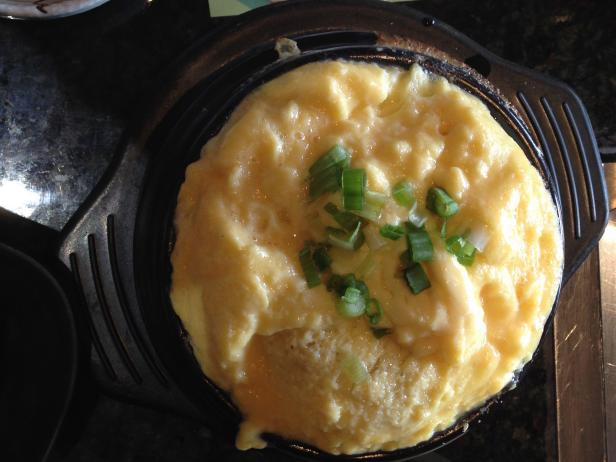
Gaeranjim might look like a souffle but this very simple combination of eggs and water (or broth) whisked together and steamed with some chopped vegetables like green onions or red pepper flakes has a creamier and slightly more dense consistency. It makes a tasty accompaniment to Korean barbecue but is also fine as a side dish.
4. Korean Fried Chicken
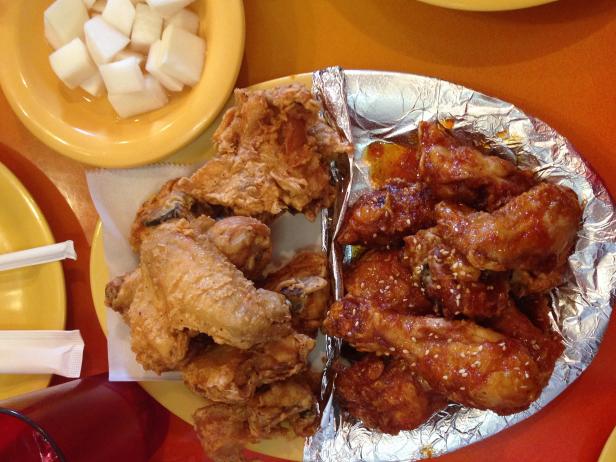
How does this differ from traditional Southern fried chicken? For one thing, the chicken are is seasoned or marinated prior to cooking. Also, chickens in Korea are smaller in size than those in the U.S. so chefs tend to cook the whole bird in a light batter that becomes super crispy when fried. The chicken is then chopped into individual pieces for serving though some may lightly brush the pieces with a hot pepper sauce or sweet garlic-soy glaze for added flavor that doesn’t affect the texture of the crunchy coating. Addictive stuff.
5. Samgyeopsal (Grilled Pork Belly)
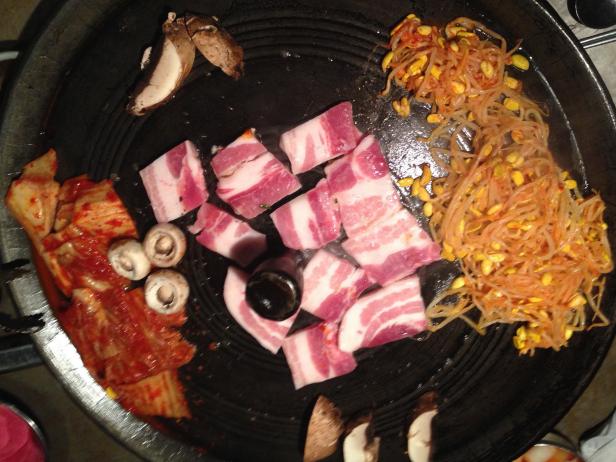
Pork belly is somewhat similar to bacon except that it is a much thicker cut (the Korean name means “three layered flesh”) and is brought to your table with scissors and tongs for you to cut up into smaller pieces and grill the meat in its own fat. You are also served other vegetables for grilling (sliced onions, mushrooms, kimchi). Upon completion you wrap bite size pieces of the pork belly and cooked vegetables in lettuce leaves and top with a preferred sauce; either gireumjang (sesame oil, black pepper and salt) or smashing (soybean paste, sesame oil, hot pepper paste). It might not be low calorie but it is the ultimate comfort food.
6. Korean Pizza
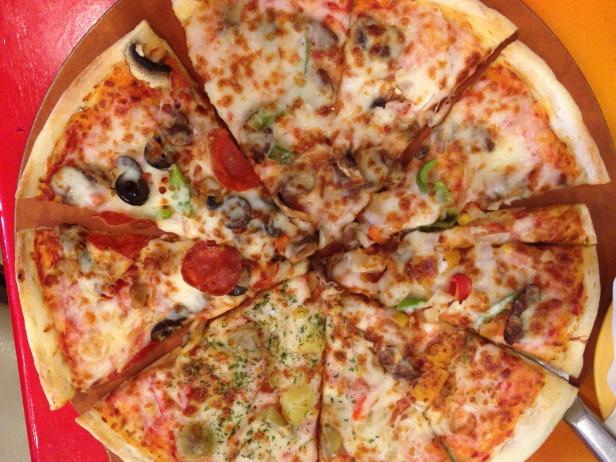
Almost every culture in the world has their own approach to pizza-making and Korean-Americans like to make their pies with a layer of scorched rice and a layer of dough which gives it a flat, crepe-like appearance. Toppings can vary from standard items like mushrooms and pepperoni to the more atypical variations of sweet potato, bulgogi (marinated beef) or seafood with a sauce layer of gochujang (spicy fermented soybean and chili paste), tomato sauce or wasabi-ranch dressing.
7. Kimchi
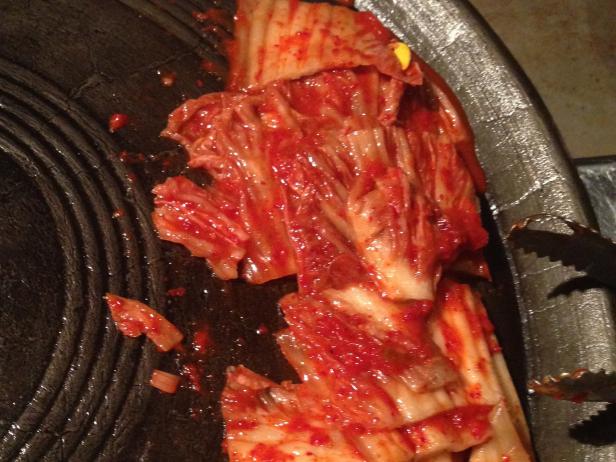
Most sushi aficionados are familiar with kimchi but for Koreans it is a regular feature on the dinner table, either as a side dish or an ingredient in the main course. Most kimchi is made from napa cabbage that has been fermented in red pepper, garlic, ginger, sugar and fish sauce but it can also be made from daikon radish or scallions. You could make a meal of it with a bowl of rice or enjoy it grilled along with your favorite meat or seafood.
8. Misutgaru
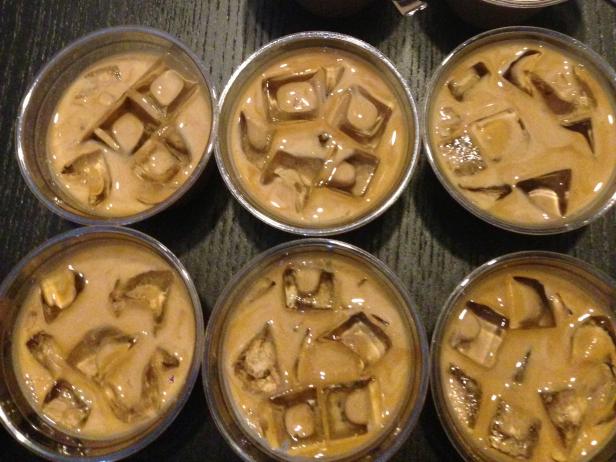
This popular beverage is made from a multigrain powder of rice, barley and other roasted and dried grains. You can mix it with water and drink it hot or add milk instead and create a variation on the latte. Misutgaru can also be sweetened with honey and served up as a smoothie. It is a nutritious, caffeine-fee beverage with a full-bodied, nutty flavor and a wonderful alternative to coffee.
9. Waffle with Fruit and Cream
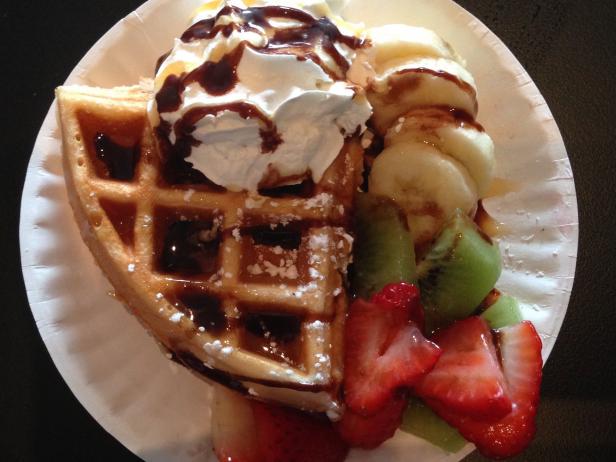
In the U.S. waffles are primarily a breakfast food but for Korean-Americans waffles are a popular dessert/street food that is usually combined with fresh sliced fruit and a dollop of vanilla cream (or ice cream) with a topping of honey syrup or caramel or chocolate sauce. It pairs particularly well with a misutgaru latte.
10. Bungeoppang (Red Bean Paste Cookies)

Sweet red bean paste is used in a lot of Asian pastries but it is featured prominently in these delightful fish-shaped cookies which are a popular treat in Korean culture. Not overly sweet, these cookies are crisp on the outside and soft and fluffy on the inside. Try them with your favorite hot tea.

